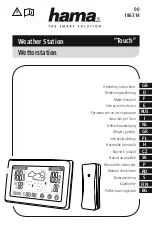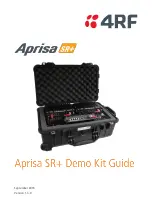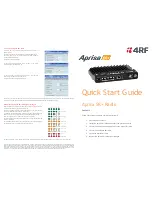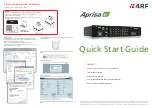
29
Special Features
short the growing season, it is a killing
freeze.
freezing rain/drizzle — rain or drizzle that
falls in liquid form and then freezes upon
striking the ground or objects that are at 32°F
(0°C) or colder.
front — the transition zone between two dis-
tinct air masses.
frost (hoarfrost) — a covering of ice pro-
duced by sublimation (to change from a gas-
eous state to a solid without becoming a
liquid) on exposed surfaces when the air
temperature falls below the frost point (the
dew point is below freezing).
frozen dew — the transformation of liquid
dew into tiny beads of ice when the air tem-
perature drops below freezing.
funnel cloud — a rotating cone-like cloud
that extends downward from the base of a
thunderstorm. When it reaches the surface, it
is called a tornado.
graupel — ice particles between .08–.20
inches (2 and 5 mm) in diameter that form in
a cloud. Snowflakes that become rounded
pellets due to riming (being frosted over) are
called graupel or snow pellets.
gust front — a boundary that separates a
cold downdraft of a thunderstorm from warm,
humid surface air. On the surface, its pas-
sage resembles that of a cold front.
hailstones — transparent or partially
opaque particles of ice that range in size
from that of a pea to that of golf balls and
larger.
haze — fine dry or wet dust or salt particles
dispersed through a portion of the atmo-
sphere. Individually these are not visible, but
cumulatively they diminish visibility.
heat index (HI) — an index that combines
air temperature and relative humidity to
determine an apparent temperature — how
hot it actually feels.
humidity — a general term that refers to the
air’s water vapor content.
hurricane — a severe tropical cyclone hav-
ing winds in excess of 64 knots (74 mph).
hurricane warning — a warning given when
it is likely that a hurricane will strike an area
within 24 hours.
hurricane watch — a hurricane watch indi-
cates that a hurricane poses a threat to an
area (often within several days) and resi-
dents of the watch area should be prepared.
jet stream — relatively strong winds concen-
trated within a narrow band in the atmo-
sphere.
knot — a unit of speed equal to 1 nautical
mile per hour (1 knot = 1.15 mph).
lake-effect snows — localized snowstorms
that form on the downwind side of a lake.
Such storms are common in late fall and ear-
ly winter near the Great Lakes as cold, dry
air picks up moisture and warmth from the
unfrozen bodies of water.
lightning — a visible electrical discharge
produced by thunderstorms.
mean annual temperature — the average
temperature at any given location for the
entire year.
mean daily temperature — the average of
the highest and lowest temperature for a 24-
hour period.
meteorology — the study of the atmosphere
and atmospheric phenomena as well as the
atmosphere’s interaction with the earth’s sur-
face, oceans, and life in general.








































